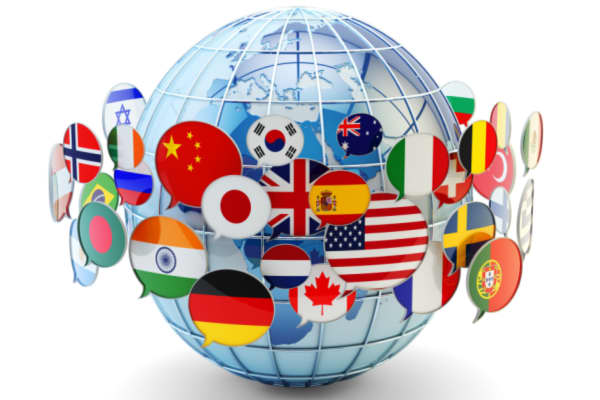
Together, they’re essential to the overall process of taking a brand global. As more companies explore opportunities to expand their brands across borders, it’s fundamental to understand each of these three concepts and their respective roles in a company’s growth strategy. This blog explains each concept, why it’s essential, and how all three work in combination for a successful global expansion.
Globalization
In the localization and translation industry, globalization refers to an organization’s efforts to culturally, linguistically, and stylistically adapt its products and services to expand into the global market. It focuses on how organizations connect with customers around the world and includes things such as product design and marketing.
For a company’s global expansion to be successful, it must first lay out a globalization strategy that builds the framework for appealing to an international market. Companies need to know the rules and norms of operating in the new target market and adapt their resources, branding, and offerings to meet the demands of different cultures. This often means conducting research on business conduct, regional culture, local laws, regulations, and more. Those findings are also later used during the internationalization, translation, and localization processes.
Fast-food giant McDonald’s is a prime example of globalization. Although the company utilizes localization in its many menu variations throughout the world, the brand’s iconic colors, font, layouts, and name remain the same and have global recognition.
Internationalization
Internationalization is the process of designing a product to meet the needs of users in many countries. It entails adapting website, product, application, game, and service designs for the international target market.
A key to transcending markets through internationalization is to make products and services as easily adaptable as possible. For example, IKEA relies on illustrations and diagrams in its assembly instructions for its country-neutral, straightforward furniture designs. As a result, no text has to be translated, and products can seamlessly be marketed and sold to a diverse clientele.
Taking the time to build out an internationalization strategy, in turn, simplifies the localization process.
Localization
Localization refers to adapting content to include cultural nuances, regional dialects, and specific cultural phrases and references. Compared to globalization, which focuses on building a strategy based on similarities across markets, localization highlights key differences to appeal to the local target audience.
Unlike globalizing and internationalizing a product or service, localizing it allows for changes to details and messaging across branding, mobile applications, products, services, and content so that they better align with regional tastes and conventions. It also covers the best ways to adapt a product to meet the local market’s needs through non-textual elements relevant to the audience—including local addresses and phone numbers, time and date formats, colors, imagery, local currencies, measurement units, and other details.
At Airbnb, localization is an important part of creating an experience that makes all guests and hosts feel like they belong. The company ensures that its service is available in hosts’ and guests’ languages and that the website’s content—imagery, for example—aligns with the user’s region. In 2021, Airbnb introduced their Translation Engine, a translation tool that improves localization and replaces the previous “click-to-translate” feature by automatically translating listings to support clear communication.
The company’s localization efforts also make it easier for customers around the world to create accounts. In regions such as China—where platforms like Facebook, Google, and traditional email aren’t the norm—Airbnb allows users to log in using their Weibo and WeChat accounts. Airbnb also pays close attention to non-textual details, including graphics and currency, to make sure they align with the user’s location and thus allow for a more personalized experience.
The American website
The Mexican website (note the changes to the currency and date formatting)
Which concept is right for your business?
While it may be tempting to pick and choose, all three concepts are vital to international growth and are most powerful and effective when combined. Globalization establishes how your company intends to expand its products and services to international markets, regardless of localities. Internationalization builds on globalization but is more specific to adapting your product or service to be easily accepted into multiple international markets. Localization takes things in the other direction by honing in on the cultural nuances and details that enable your brand’s acceptance into a specific target market. All three strategies work in tandem to transform your business and support a successful global expansion.
TrueLanguage’s expert linguists can bring globalization, localization, and internationalization to any project using their years of experience and helpful translation tools like computer-assisted translation (CAT) and translation memory (TM). Contact us today to connect with your global audience and grow your business.






